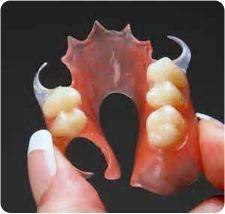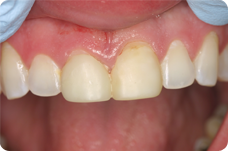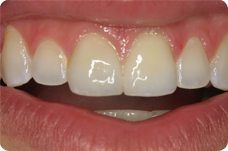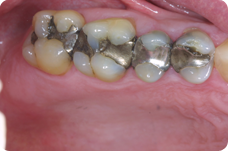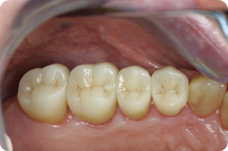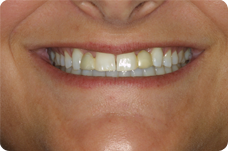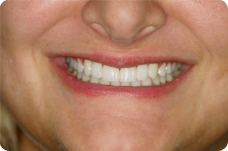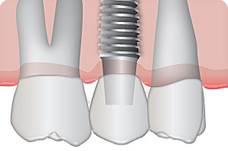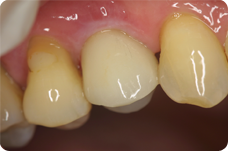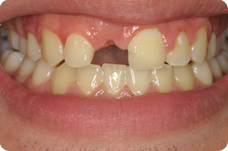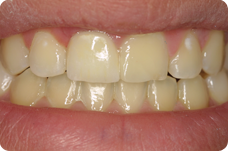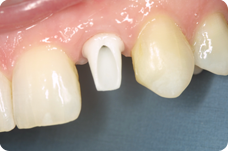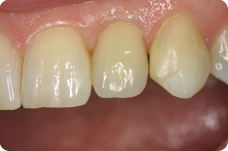Dental Services
Gum Disease
(Peridontal Disease)
Nearly three-quarters of the population has some form of gum disease. It is #1 cause of tooth loss among American adults today. Gum disease has been linked to heart disease, diabetes, and other medical conditions.
We thoroughly check for gum disease, and if you exhibit any stages of infection, we can schedule a series of advanced cleanings and planned treatments to prevent further damage.
We offer the following periodontal therapy services:
- Computer Charting and Diagnostic Services
- Non-surgical Gum Therapy
- Antibiotic Therapy
- Oral Health Instruction /Diet Counseling
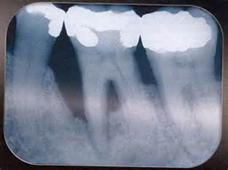
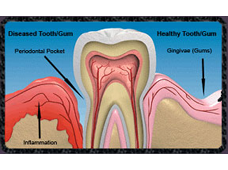
Dental Sealants: Dental sealants are a safe, painless and low-cost way to help protect your child's back teeth from decay.
Sealants have been used on children's teeth for over 20 years and consist of a thin plastic coating bonded to the chewing surface of the molars and premolars. This shield prevents food and bacteria from settling in to the grooves of the teeth and causing decay.
Sealants can be applied as soon as the first permanent molars (6-year molar) come in, and again around the ages of 11-14 to protect the second permanent molars
They generally take only 30 minutes to apply and will last for years. Many dental insurance plans cover all or part of the cost. We will help obtain all the benefits your insurance will allow to make this important protection affordable.
Athletic Mouth Guards
For children and adults who engage in contact sports or activities like weightlifting, wearing a professionally fabricated mouthguard is an important step in protecting your smile and the healthy function of your teeth.
Night-time “Bruxing” Grinding Guards
Many patients suffer with nighttime grinding or clenching their teeth. “Bruxing” is a common cause of headaches, tooth sensitivity, muscle soreness, gum tissue recession and notching of the root surface. In extreme cases, severe tooth wear, bone loss and even the loss of teeth can result.
Our routine examinations will check for signs of Bruxing and we can prescribe a custom guard that can alleviate the symptoms and protect your dentition.
Few children have fingerprints taken and many do not have dental records. Fillings and X-rays have historically been the primary basis for dental identification, but the successful fight against tooth decay has left many children without such information. Toothprints was developed by a children’s dentist as a simple, cost-effective way to provide a unique record of your child.
How does Toothprints work?
Your child simply bites into a softened plastic wafer and the resulting impression registers the shape of teeth and overall bite. The wafer is sealed in a plastic bag, which you then take home to keep in a safe place for easy access. Not only does the Toothprints system provide dental identification, it also supplies a DNA source from the saliva proteins that remain on the wafer. In addition the saliva can make the wafer an effective tool in scent-dog tracking.
Why should we participate in Toothprints?
Hopefully you will never need to provide the authorities with a means of identifying your child. However, Toothprints can give you peace of mind knowing that you have taken an important safety measure.

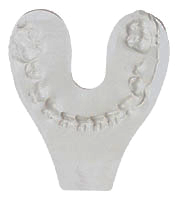
At our office we prefer to provide our patients with the newest and best available filling materials, which are bonded composite resins. They provide superior protection for your teeth, as they eliminate the shortcomings of old-fashioned silver fillings.
Many people who are undergoing a cosmetic improvement choose to replace their silver and black fillings with white fillings. Please call the office if you want to look into replacing any of your old unsightly silver fillings.
The benfits:
- They look natural
- They allow for more of your tooth structure to remain intact
- They bond and seal the tooth better
- They insulate against hot and cold better
- If they wear down, they can be repaired more easily
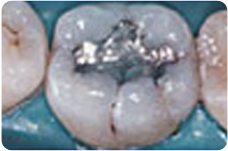
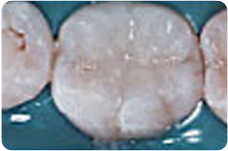
In the past, porcelain crowns were always built upon a metal core, and if the gum tissue receded they would show an unsightly black line. Recent breakthroughs in adhesives, combined with the development of stronger porcelain materials, allow us to make crowns or partial crowns entirely out of porcelain.
The translucency of all-porcelain crowns mimics the look of a natural tooth. Without metal, the problem of the dark line is eliminated. All-porcelain crowns are placed just above the gum line, which is much healthier for you and your gum tissue.
Dental bridges literally bridge the gap created by one or more missing teeth. A bridge is made up of two crowns for the teeth on either side of the gap, with a false tooth or teeth in between.
Dental bridges are supported by natural teeth or implants and are used to:
- Enhance your smile
- Restore your ability to properly chew and speak
- Maintain the shape of your face
- Distribute the forces in your bite properly by replacing missing teeth
- Prevent remaining teeth from drifting out of position
Why replace a missing tooth?
We will evaluate each patient to determine if they are a candidate for Invisalign. Invisalign is the clear alternative to braces that is much easier for cleaning and eating. The clear aligners are changed every 10-14 days and at the end of treatment, clear retainers are made for retention.
What is an implant?
Implants are titanium cylinders that serve as artificial roots. Attaching a crown to an implant allows us to avoid placing a bridge. An implant crown is practically indistinguishable for your natural teeth.It fits so securely that you won’t notice any difference when you chew and speak.
If you are interested in replacing a missing tooth with an implant, our doctors will perform a thorough evaluation to determine whether you are a good candidate for this kind of restoration.
For those missing some or all or their natural teeth, we can create a natural, beautiful smile and well-functioning bite with prosthetic dentures or partials.
In fact, newer materials can now, do away with unsightly metal clasps that are often undesirable to patients who wear partial dentures.
In addition, today’s technologies offer many solutions to worn, ill-fitting dentures. Implant stabilization is one way to give the confidence of a strong secure bite. Ask us about what our office can do to give you back the feeling of having your own teeth again.
